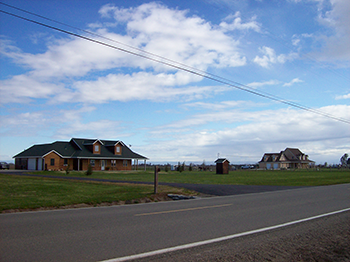
What is it that makes people want to live in The Country? If you were raised there, you most likely want to stay. And more and more people that were raised in cities see the appeal of rural living and are seeking refuge away from the city. Is it simply the aesthetic beauty? Is it the interaction with the wildlife that The Country harbors? Or, is it the freedom of wide-open spaces. For the last several decades, there has been an increase in parcels of farm land being split into smaller, one to five acre parcels, in which homes are built. At times, the remaining acreage of these parcels continues to be farmed. Sometimes it is planted in pasture and fenced to bring in a couple of horses. Sometimes it is planted in trees. Sometimes nothing is done with the excess land.
These ranchettes, or weekend farmers as some people call them, also bring challenges for water managers and the farm operations surrounding them. Some of the new neighbors like to ride their their dirt bikes and quads up and down the canal banks. Some want to fish in the neighboring canals, which may seem harmless until you consider the cold, fast moving water that can be very dangerous to children. There also certainly are a lot more people swimming in the canals during the hot summers.
Yet, many of these new neighbors do not like the mosquitoes that surround rice fields, nor the pile of brush from the canal cleanup project that now seems like an eye sore. Some of these folks do not have patience for the farm equipment that must transverse the county roads to get from one job to another, or work that is occurring in the fields early on a Saturday or Sunday morning when the home owners are trying to sleep.

These challenges are a simple fact of rural life in a state with 38 million people. There has been a concerted effort by most counties and cities to deal with the urban-agricultural borders, yet the pressures on these rural areas remains. The need to accommodate the encroachment of the city into rural areas is yet another example of how water districts and farm operations must constantly evolve and change as the environment around them changes. These are just some of the many new and challenging aspects to running a safe, efficient and effective water district and farming operation today.



